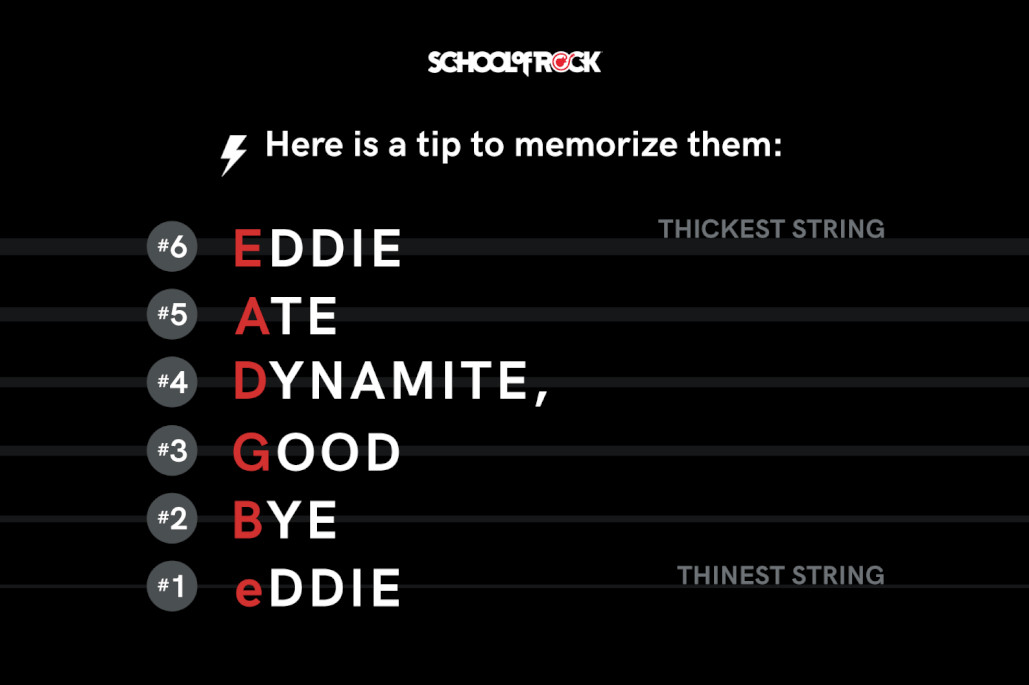Learning How To Tune A Guitar is a fundamental skill for any aspiring guitarist. An out-of-tune guitar can make even the simplest chords sound jarring, hindering your progress and enjoyment. This guide will walk you through various methods to achieve perfect guitar tuning, whether you’re using an electronic tuner or training your ear. Mastering how to tune a guitar is the first step to unlocking a world of musical possibilities and ensuring your practice sessions are productive and enjoyable.
Why Tuning Matters for Guitar Players
Before diving into the methods, it’s crucial to understand why guitar tuning is so important. A properly tuned guitar is essential for several reasons:
- Pleasant Sound: Music relies on harmony, and harmony is built on accurate pitch. An in-tune guitar produces the correct pitches, allowing chords and melodies to sound as intended, creating a pleasant and musical experience.
- Effective Practice: Practicing on an out-of-tune guitar can train your ear to recognize incorrect pitches. Tuning your guitar before each session ensures you’re learning to identify and play the right notes from the start.
- Playing with Others: Whether you’re jamming with friends or performing on stage, a tuned guitar is vital for playing in sync with other musicians. Being in tune ensures your guitar complements the ensemble rather than clashing with it.
- Guitar Maintenance: Regular tuning, even if just checking, helps you become familiar with how your guitar responds and can alert you to potential issues like old strings that won’t hold a tune.
Understanding Guitar Tuning Basics
Guitar tuning is adjusted using the tuning pegs located on the guitar’s headstock. These pegs control the tension of each string. Turning the pegs clockwise tightens the string, raising the pitch, while turning them counter-clockwise loosens the string, lowering the pitch.
Standard Guitar Tuning: EADgbe
A standard 6-string guitar is tuned to specific notes, from the thickest (lowest pitch) string to the thinnest (highest pitch) string. This standard tuning is:
- 6th String: E (lowest E)
- 5th String: A
- 4th String: D
- 3rd String: G
- 2nd String: B
- 1st String: e (highest E)
A helpful mnemonic to remember the guitar string notes is “Eddie Ate Dynamite, Good Bye eddie.”
How Often Should You Tune Your Guitar?
Ideally, you should tune your guitar every time you play. Guitars are susceptible to changes in temperature and humidity, and even the act of playing can cause them to go out of tune, especially with string bending or extended playing sessions. Developing a habit of frequent tuning, even during practice, will keep your ear trained and your playing sounding its best. If a chord sounds off, even if your fingers are in the correct position, it’s a strong indicator that your guitar tuning needs adjustment.
 Close-up of guitar headstock showing tuning pegs, illustrating the mechanics of guitar tuning.
Close-up of guitar headstock showing tuning pegs, illustrating the mechanics of guitar tuning.
Methods for Tuning Your Guitar
There are two primary methods for how to tune a guitar: using an electronic tuner and tuning by ear. Both are valuable skills to develop.
Tuning with an Electronic Tuner
Electronic tuners have simplified guitar tuning significantly. They offer accuracy and speed, making them excellent tools, especially for beginners.
Types of Electronic Tuners:
- Clip-on Tuners: These convenient tuners clip onto the guitar’s headstock and detect string vibrations. They are highly accurate, work well in noisy environments, and are suitable for both acoustic and electric guitars.
- Tuner Apps: Numerous smartphone apps utilize your device’s microphone to detect pitch. Many are free and offer a visual interface guiding you to the correct tuning.
- Built-in Tuners: Some guitar amplifiers and effects pedals include built-in tuners, offering an integrated tuning solution for electric guitarists.
How to Tune Using an Electronic Tuner:
- Choose a string: Start with the 6th string (low E).
- Pluck the string: Play the open string.
- Observe the tuner: The tuner will display the note you’re playing and indicate whether it’s sharp (too high) or flat (too low).
- Adjust the tuning peg:
- If the note is flat, turn the tuning peg to tighten the string and raise the pitch until the tuner indicates the correct note (E) and shows it’s in tune (often indicated by a green light or needle in the center).
- If the note is sharp, turn the tuning peg to loosen the string and lower the pitch until the tuner indicates the correct note and in-tune status.
- Repeat for all strings: Follow steps 1-4 for each string in the order of 6th, 5th, 4th, 3rd, 2nd, and 1st.
- Fine-tune: After tuning all strings, strum a chord and listen. Minor adjustments might be needed to perfect the tuning. Recheck each string individually with the tuner if necessary.
Tuning Your Guitar Without a Tuner (By Ear)
Learning to tune a guitar by ear is a valuable skill that develops your musical ear and provides a reliable tuning method when a tuner isn’t available. This method relies on relative tuning, where you tune each string in relation to a previously tuned string.
Using a Reference Pitch:
For the most accurate ear tuning, it’s helpful to have a reference pitch. This could be:
- Another tuned instrument: A piano, keyboard, or another guitar already in tune.
- Pitch pipe or tuning fork: These devices produce a specific reference tone, often A440 (A at 440Hz), which can be used to tune the 5th string (A).
Step-by-Step Tuning by Ear (Relative Tuning):
- Tune the 5th String (A) to a Reference Pitch: If you have a reference A, tune your 5th string until it matches. If not, you can start by approximating the A string pitch based on memory or another source, and then refine the tuning of the whole guitar later.
- Tune the 6th String (E): Fret the 5th string at the 5th fret. This note should be E, the same as the open 6th string. Pluck the 5th string at the 5th fret and the open 6th string alternately, and adjust the 6th string’s tuning peg until the pitches match. Listen for the “beats” – a wavering sound that disappears as the strings approach the same pitch.
- Tune the 4th String (D): Fret the 6th string at the 5th fret. This note should be A, the same as the open 5th string. Pluck the 6th string at the 5th fret and the open 5th string alternately, and adjust the 5th string’s tuning peg until the pitches match.
- Tune the 3rd String (G): Fret the 5th string at the 5th fret. This note should be D, the same as the open 4th string. Pluck the 5th string at the 5th fret and the open 4th string alternately, and adjust the 4th string’s tuning peg until the pitches match.
- Tune the 2nd String (B): Important Note: For the B string, fret the 4th string at the 4th fret. This note should be G, the same as the open 3rd string. Pluck the 4th string at the 4th fret and the open 3rd string alternately, and adjust the 3rd string’s tuning peg until the pitches match.
- Tune the 1st String (e): Fret the 3rd string at the 5th fret. This note should be B, the same as the open 2nd string. Pluck the 3rd string at the 5th fret and the open 2nd string alternately, and adjust the 2nd string’s tuning peg until the pitches match. Finally, fret the 2nd string at the 5th fret. This note should be e, the same as the open 1st string. Pluck the 2nd string at the 5th fret and the open 1st string alternately, and adjust the 1st string’s tuning peg until the pitches match.
- Check and Fine-tune: Play a chord and listen carefully. Make any necessary微调 adjustments to individual strings until the guitar sounds perfectly in tune.
 Diagram illustrating the guitar fretboard and string notes, highlighting the relationship between fretted notes and open string tunings for ear tuning practice.
Diagram illustrating the guitar fretboard and string notes, highlighting the relationship between fretted notes and open string tunings for ear tuning practice.
Step-by-Step Guitar Tuning Guide: String by String
Let’s break down the tuning process for each guitar string note:
Tuning the Low E String (6th String)
If using a tuner, pluck the 6th string and tune until the tuner indicates E. If tuning by ear, use a reference E if available, or tune it relative to the 5th string as described above.
Tuning the A String (5th String)
Using a tuner, tune the 5th string to A. By ear, play the 5th fret of the 6th string (E) and match the open 5th string to that pitch.
Tuning the D String (4th String)
Tune the 4th string to D with a tuner. By ear, play the 5th fret of the 5th string (A) and match the open 4th string to that pitch.
Tuning the G String (3rd String)
Tune the 3rd string to G with a tuner. By ear, play the 5th fret of the 4th string (D) and match the open 3rd string to that pitch.
Tuning the B String (2nd String)
Tune the 2nd string to B with a tuner. By ear, play the 4th fret of the 3rd string (G) and match the open 2nd string to that pitch. Note the 4th fret here, not the 5th.
Tuning the High e String (1st String)
Tune the 1st string to e with a tuner. By ear, play the 5th fret of the 2nd string (B) and match the open 1st string to that pitch.
Tips to Keep Your Guitar in Tune Longer
Once you’ve achieved perfect guitar tuning, here are some tips to maintain it:
- Regularly Change Strings: Old strings lose their elasticity and ability to hold tune. Replace your strings when they sound dull or become difficult to keep in tune.
- Stretch New Strings: New strings need to be stretched. After installing new strings, gently stretch them by pulling them away from the fretboard and retune. Repeat this process a few times until they settle and hold their tune.
- Maintain Proper Guitar Care: Store your guitar in a stable environment, avoiding drastic temperature and humidity changes, which can cause the wood to expand and contract, affecting tuning. When not playing, store your guitar in its case.
- Wipe Down Strings: After playing, wipe down your strings with a clean, dry cloth to remove sweat and oils, prolonging their life and helping maintain tuning stability.
By mastering how to tune a guitar and following these maintenance tips, you’ll ensure your instrument always sounds its best, making your practice sessions more productive and your musical journey more enjoyable.
[

